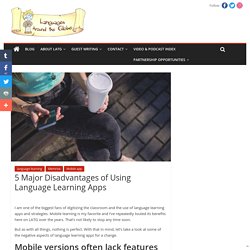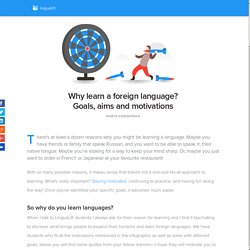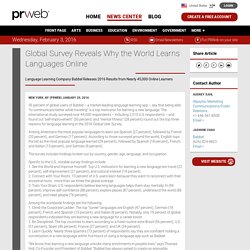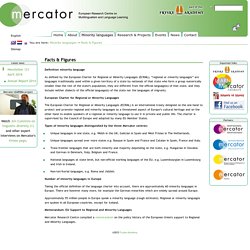

How to find the right language teacher online. Lindsay Does Languages - Inspiring independent language learners + online teachers. SPEEKOO. [FW Radar] Speekoo, l’application pour apprendre les langues tout en voyageant. Alexis Collomb était l’un des professeurs d’Etienne Genvrin, qui lui a alors présenté le produit qu’il développait en parallèle de ses études.
![[FW Radar] Speekoo, l’application pour apprendre les langues tout en voyageant](http://cdn.pearltrees.com/s/pic/th/application-apprendre-174366506)
Alexis a été séduit par le produit. Apprenez une langue avant votre prochain voyage avec Speekoo. Préparer son prochain voyage c’est aussi anticiper la barrière de la langue.

En la matière, les Français n’ont pas bonne réputation. Cela n’a pas empêché Etienne Genvrin de lancer Speekoo.com l’année dernière. Cette méthode d’apprentissage innovante est disponible en ligne et sur application. How to learn a language: Use "spaced repetition" The secret of the cranberry’s success has always been stealth.

After two centuries of cranberry-free Thanksgivings, the fruit quietly became a holiday staple thanks to US general Ulysses S. Grant’s 1864 holiday feast. It slipped into lunch sacks across America by pioneering juice boxes, and craftily came to dominate the juice aisles by commingling with apple juice. In the 1990s, a little shape-shifting allowed dried cranberries to infiltrate baked goods and trail mixes. In recent years, it crept its cranberry creep over to China, nestling into the palms of health-conscious young people across the Middle Kingdom.
And now, the bitter red bog-berry finds itself in the midst of the burgeoning US-China trade war. 5 Major Disadvantages of Using Language Learning Apps. I am one of the biggest fans of digitizing the classroom and the use of language learning apps and strategies.

Mobile learning is my favorite and I’ve repeatedly touted its benefits here on LATG over the years. That’s not likely to stop any time soon. Why learn a foreign language? Goals, aims and motivations. There's at least a dozen reasons why you might be learning a language.

Maybe you have friends or family that speak Russian, and you want to be able to speak in their native tongue. Maybe you're looking for a way to keep your mind sharp. Or, maybe you just want to order in French or Japanese at your favourite restaurant! With so many possible reasons, it makes sense that there's not a one-size-fits-all approach to learning. Global Survey Reveals Why the World Learns Languages Online. New York, NY (PRWEB) January 20, 2016 56 percent of global users of Babbel – a market-leading language learning app – say that being able “to communicate better while traveling” is a top motivator for learning a new language.

The international study surveyed over 44,000 respondents – including 2,510 U.S. respondents – and found out “self-improvement” (50 percent) and “mental fitness” (28 percent) round out the top three reasons for language learning in the 2016 Global User Survey. Among Americans the most popular languages to learn are Spanish (27 percent), followed by French (20 percent), and German (17 percent). According to those surveyed around the world, English tops the list as the most popular language learned (28 percent), followed by Spanish (18 percent), French and Italian (13 percent), and German (9 percent).
The survey includes findings broken out by country, gender, age, language, and occupation. Specific to the U.S., notable survey findings include: 1. Litreview. Top 10 Most Useful Languages, Important, Influential. Knowing a second language is a highly desirable trait in today’s world, especially if your work or hobbies have an international focus.

But for most people, learning languages is an arduous undertaking, constituting a big investment of intellectual resources. The best advice is to learn something you enjoy or gives you meaning, as by far the biggest challenge in learning any language is maintaining the motivation to keep studying and improving month after month. But if you’re one of those who have difficulties choosing, perhaps this list will help. I rank the languages based on their global importance (demography; economic & political influence), ease of learning, and personal usefulness (e.g. good tourist destinations; are in demand). 1. 2. File:List of languages by number of native speakers.png.
Top 10 important languages to learn. “If you talk to a man in a language he understands, that goes to his head.

If you talk to him in his own language, that goes to his heart.” List25. If any of you have ever tried learning a foreign language you know that the hardest step is often the first – choosing which one.

There are over 6,000 languages in use today and roughly 30% are spoken by 1,000 people or less. So, to make your job easier, in this list we are ranking the 25 most influential languages in the world. Languages for the future report. Facts & Figures - Mercator Research Centre. As defined by the European Charter for Regional or Minority Languages (ECRML), “regional or minority languages” are languages traditionally used within a given territory of a state by nationals of that state who form a group numerically smaller than the rest of the state’s population; they are different from the official language(s) of that state, and they include neither dialects of the official language(s) of the state nor the languages of migrants.

European Charter for Regional or Minority Languages The European Charter for Regional or Minority Languages (ECRML) is an international treaty designed on the one hand to protect and promote regional and minority languages as a threatened aspect of Europe’s cultural heritage and on the other hand to enable speakers of a regional or minority language to use it in private and public life. The charter is supervised by the Council of Europe and adopted by many EU Member States. Unique languages in one state, e.g. Cramlap: CRAMLAP. Langues régionales et minoritaires - Commission européenne. Chart: Europe's Second Most Useful Foreign Languages. There are 23 officially recognised languages within the European Union while there are more than 60 indigenous regional and minority languages. 54 percent of Europeans are able to have a conversation in one additional language while 25 percent can converse in two.
While Europeans overwhelmingly consider English the most useful foreign language to learn, what comes second? Unsurprisingly, Russian is dominant in Finland, Lithuania, Latvia and Estonia. German is very well represented, considered the most most useful second language by people in no fewer than eleven countries. This chart shows the second foreign language people consider the most useful for personal development. Ebs 386 en. Infographic: The World’s Largest Languages. Bienvenue sur le site d'apprentissage des langues sous hypnose. Erin McKean: Go ahead, make up new words! BritAcFINAL living language. TELL-OP – New 2016 Foreign language learning statistics in the EU. Statistiques sur l’apprentissage des langues étrangères - Statistics Explained. Données extraites en juin 2015. Données plus récentes: Informations supplémentaires Eurostat, Principaux tableaux et Base de données. La version anglaise est plus récente. Learnenglishteens.britishcouncil. Lewinska.
Read2. How to learn a new language: 7 tips from TED Translators. Knowing more than one language is great for your brain. But what’s the best way to learn? TED’s Open Translation Project volunteers share 7 tips: 1. Get real. Decide on a simple, attainable goal to start with so that you don’t feel overwhelmed. 2. The Best Method to Learn English. What is the best teaching method for learning English? According to academic research, linguists have demonstrated that there is not one single best method for everyone in all contexts, and that no one teaching method is inherently superior to the others. Also, it is not always possible – or appropriate – to apply the same methodology to all learners, who have different objectives, environments and learning needs. Applying the most appropriate method for that learner’s specific objectives, learning style and context.
An experienced professional language teacher always adopts the Principled Eclecticism approach, deciding on the most suitable techniques and applying the most appropriate methodology for that learner’s specific objectives, learning style and context. Methods of teaching English have developed rapidly, especially in the previous 40 years. How to Learn a Language. Your best starting point is to have either a pressing need, or a powerful desire to master the language. This may seem obvious, but interest combined with passion brings the best results. If you're not really enthusiastic about learning the language, then you will end up stalling or quitting. Your sustained interest is decisive - which is why courses with a teacher often work better than teaching yourself, as the structured setting and company can carry you over the inevitable slumps.
Language pedagogy. Language pedagogy[definition needed] may take place as a general school subject, in a specialized language school, or out of school with a rich selection of proprietary methods online and in books, CDs and DVDs. There are many methods of teaching languages. Some have fallen into relative obscurity and others are widely used; still others have a small following, but offer useful insights. There are three principal views: The structural view treats language as a system of structurally related elements to code meaning (e.g. grammar).The functional view sees language as a vehicle to express or accomplish a certain function, such as requesting something.The interactive view sees language as a vehicle for the creation and maintenance of social relations, focusing on patterns of moves, acts, negotiation and interaction found in conversational exchanges.
Language education. Language education is the teaching and learning of a foreign or second language. Statistical learning in language acquisition. Statistical learning is the ability for humans and other animals to extract statistical regularities from the world around them to learn about the environment. Although statistical learning is now thought to be a generalized learning mechanism, the phenomenon was first identified in human infant language acquisition.
The earliest evidence for these statistics learning abilities comes from a study by Jenny Saffran, Richard Aslin, and Elissa Newport, in which 8-month-old infants were presented with nonsense streams of monotone speech. Each stream was composed of four three-syllable “pseudowords” that were repeated randomly. After exposure to the speech streams for two minutes, infants reacted differently to hearing “pseudowords” as opposed to “nonwords” from the speech stream, where nonwords were composed of the same syllables that the infants had been exposed to, but in a different order. Diglossie. Un article de Wikipédia, l'encyclopédie libre. En sociolinguistique, la diglossie désigne l'état dans lequel se trouvent deux variétés linguistiques coexistant sur un territoire donné et ayant, pour des motifs historiques et politiques, des statuts et des fonctions sociales distinctes, l'une étant représentée comme supérieure et l’autre inférieure au sein de la population.
Ce que c'est qu'apprendre une langue et ce qui facilite son apprentissage. Dietlinde Baillet, militante ICEM, professeur d'allemand en collège, formatrice MAFPEN, poursuit sa recherche en Sciences de l'Education. Elle prépare actuellement une thèse sur la formation des enseignants pour des apprentissages centrés sur les apprenants. Foreign language learning statistics - Statistics Explained. Data extracted in June 2015. Most recent data: Further Eurostat information, Main tables and Database. Planned article update: June 2016. EUK_2012_Annual_Stats_Report_FINAL.pdf. Stayingthecoursefinalcopy.pdf. How Long Does it Take to Become Proficient? - Language Testing International. How Much Time Is It Realistic to Learn a Language in? - "I kinda like languages" blog. How Long Does it Take to Learn a New Language?
How Long Does It Take to Become Fluent? 12 Rules for Learning Foreign Languages in Record Time — The Only Post You’ll Ever Need. How much time does it take to learn a language? Langue facile, langue difficile, savoir à quoi s'attendre. Pourquoi 3 mois suffisent pour apprendre une langue ? Loi de Parkinson. 5 conseils pour planifier l'apprentissage d'une langue étrangère - Apps pour apprendre rapidement l'anglais, l'espagnol, l'italien, l'allemand et le portugais sur iPhone, iPad, Android.
Combien de temps faut-il pour maîtriser une langue ? - ESL – Séjours linguistiques. Niveaux et progression - ESL séjours linguistiques. Pouvez-vous apprendre plus d'une langue à la fois ? Les astuces d’Anne pour apprendre une langue. La recette pour apprendre une langue étrangère facilement. Measuring_the_Effectiveness_RS-5.pdf. Why the baby brain can learn two languages at the same time.
Theconversation. From busuu to Babbel, language-learning startups adapt to thrive. Best-of. Apprendre les langues étrangères. Comment Apprendre une Langue. The Glossika Blog. Oral Comprehension (listening) How many languages are there in the world? Which are the world's most influential languages? Future - The invented language that found a second life online. Do Language Apps Like Duolingo Work?
Does Duolingo Even Work. 12 Ideas For Making the Perfect Language Learning App by Fluent Language.